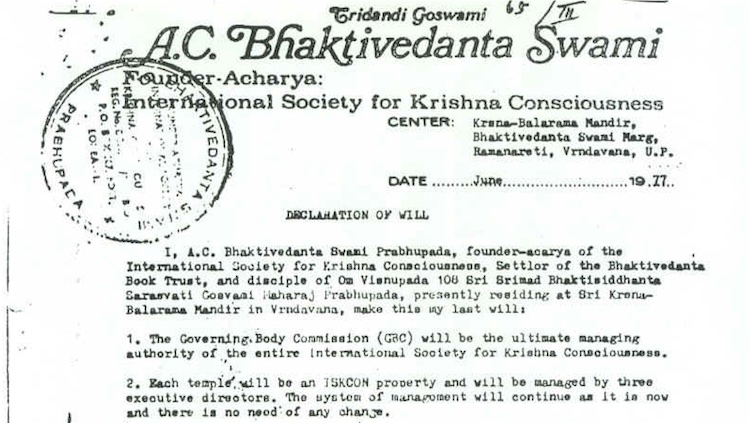New York State Court Renders Historic Decision in favor of Hare Krishna Movement
By ISKCON Communications Ministry | Окт 08, 2017

New York Supreme Court Justice Randi Sue Marber in her October 2 decision agreed with Hare Krishna Movement leadership and recognized the legal status of this ancient religious tradition and the hierarchical governance structure of International Society for Krishna Consciousness (ISKCON).
ISKCON Founder-Acarya Srila A. C. Bhaktivedanta Swami Prabhupada began his mission in New York City in 1966 with a single New York State religious corporation, but as the Hare Krishna Movement expanded around the globe, Srila Prabhupada made provision for management of the worldwide movement.
Justice Marber found “…in 1970, the Founder created a governing board, the GBC (Governing Body Commission). He created a document entitled ‘Direction of Management’ which listed the various Temples he founded, established the GBC, and selected the GBC members that were to succeed him in managing ISKCON…The GBC was vested with the authority to oversee all operations and management of ISKCON.”
Justice Marber, in examining Srila Prabhupada’s will, ruled on the hierarchical nature of ISKCON worldwide … “the Founder also established a Trust in the second Article of his Will which declared that each ISKCON temple would be held for the benefit of the ISKCON Society at large. The language of the Trust provision specifies that the GBC would continue to manage the ISKCON Society in perpetuity.”
The case began in 2004 in Freeport, New York, when persons from outside Long Island, through deception and subterfuge, took control of the Long Island ISKCON Temple board of trustees. Those persons opposed GBC authority and taught a philosophical system called ritvik, which the GBC declared a deviation from traditional Hare Krishna, or Vaishnava Hindu teachings. After attempts to mediate the dispute failed, a lawsuit was filed.
“This historic decision legally recognizes an essential religious practice followed in ISKCON today, the system of guru parampara, or disciplic succession, as prescribed in the "Бхагавад-гита", the core Sanskrit scripture of the Hare Krishna Movement,” said Adarsi Das, co-plaintiff and ISKCON Inc. trustee. “It also validates the GBC as the sole authority to define and control membership within the Movement.”
Senior ISKCON members and other academics flew in from around the world to testify to the history and governance of ISKCON and the court pored over thousands of pages of supporting documents.
In addition to recognizing the GBC as the highest ecclesiastical authority of ISKCON, Justice Marber held that the resolutions of the GBC are binding on New York Courts regarding internal religious decisions: “the Court shall defer to the resolutions passed by the Plaintiff, GBC, concerning the Defendants….as such are binding on this Court.” She stated, “In 1990, the GBC passed a Resolution finding that the Ritvik philosophy was a ‘dangerous philosophical deviation’ from ISKCON practice, condemned its practice, and outlawed Ritvik practice from ISKCON and the Society at large.”
The Court ruled in favor of the GBC on every issue, with the exception of one procedural request, and granted a court order giving the GBC all the relief sought, including immediate of eviction of the defendants.















